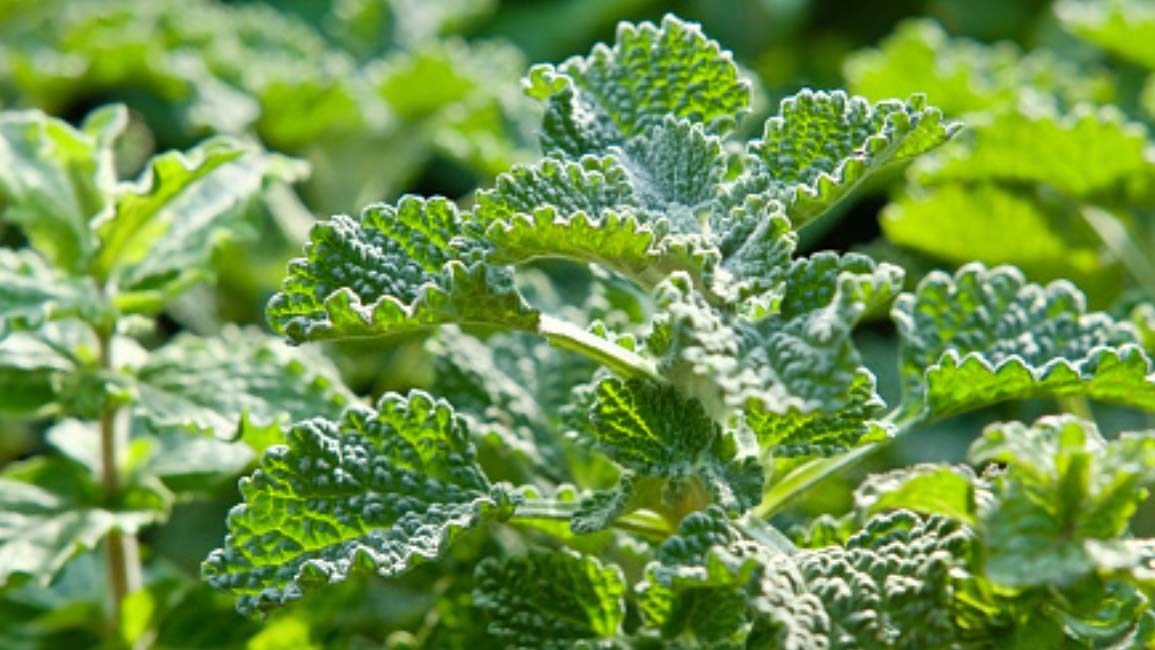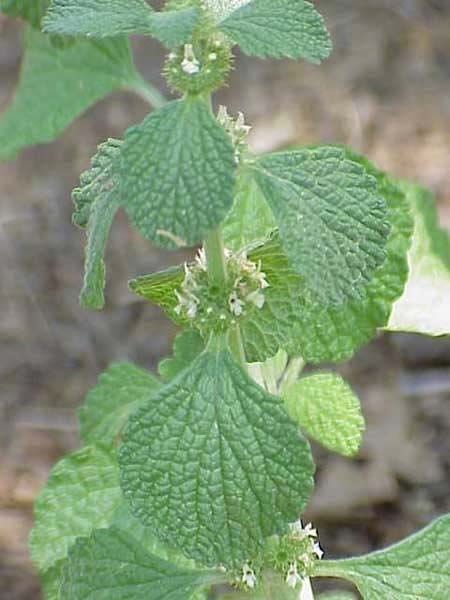How to Grow Horehound in Your Garden

Horehound (Marrubium vulgare) is a tender drought hardy perennial and a member of the mint family. Horehound prefers full sun and well drained soils. Plant in early spring, either from seed or transplants. Seeds are slow to germinate; therefore, sow shallow and keep moist for optimum emergence. Thin to 10 inches apart once established and harvest when the plant starts to bloom. Once established, horehound is very drought tolerant. Like all members of the mint family, it spreads rapidly and can become weedy. Horehound is used to make teas, candies and cough drops.
Horehound Varieties
Silver horehound has a whiter flower and has woollier leaves than the common horehound. Spanish horehound has a pink flower. Most plants are hardy to USDA Zone 4. Consult local specialty nurseries or seed catalogs for additional varieties. Horehound will survive winters in most areas of Utah, but may need protection in colder areas of the state.
How to Grow Horehound
Soils

Horehound grows in most soils types especially poor, dry and neglected soils. Horehound does best in full sun and sandy well-drained soil. Most soils in Utah are well suited to horehound production.
Soil preparation
Before planting, till the top 6 to 8 inches of soil, but do not enrich the soil with fertilizer or compost.
Plants
Horehound can be started from seeds or cuttings in the early spring. Seeds should be sown just below the surface (¼ inch deep) about 3 weeks before the frost free date for your area. Seeds are very slow to germinate. Once established, horehound readily self-propagates if allowed to flower and set seed.
Planting and Spacing
After emergence, thin seedlings to 10 inches apart. Rooted cuttings can also be generated from young stems. Cut the stem just below a node, remove several of the lower leaves, dip in rooting hormone, and set the cuttings in warm, moist rooting medium. Once rooted, plants should be set about 1 foot apart. Horehound can also be propagated by root division of more mature plants. Root pieces, containing three or four buds, are dug up from established plants and these are used to start new plants.
Water
Horehound is very drought tolerant. Excessive watering or standing water will kill the plant, especially if planted in a soggy site during the winter. During the summer, water no more than one time per week allowing the soil to dry between irrigations.
Fertilization
Horehound requires very little additional fertilizer during the year. Apply an all purpose fertilizer early in the spring to encourage new growth and some additional nitrogen after harvest to encourage new leaf growth using an organic or all- purpose liquid nitrogen. Avoid late summer fertilizer applications so plants harden off before fall dormancy.
Problems with Growing Horehound
Weeds
Horehound can be invasive in the garden, much like the mints. Grow it in containers which are brought indoors later in the year. Horehound is a prolific seed producer so cut off the flowers before seeds set. Cultivate shallowly around the plants to control weeds and mulch with grass clippings, straw and newspapers.
Pests and Disease
Horehound is not susceptible to many diseases or insects problems
How to Harvest and Store Horehound
Horehound generally does not produce flowers until the second year. Some leaves may be harvested the first year (⅓ of the leaves). Tie the harvested leaves together in a bundle and hang them indoors out of direct sunlight or in a shady place to dry. In subsequent years, flowers and leaves should be harvested at the peak of bloom. Once dry, chop the leaves and blooms and store them in an air tight container or jar. Dried horehound has a shelf life of about 1 year.
Horehound Plant Productivity
Production depends on the variety planted and number of plants grown. Plant two to three plants for fresh use and an additional two to three plants for storage.
Horehound Uses and Nutrition Facts
Horehound is an immune booster and contains vitamins A, B, C, E, essential fatty acids, iron, and potassium. The leaves and flowers have a minty-menthol flavor and are used in teas, candies, and cough drops.
Many herbs are used for their claimed health benefits. For more information on herbal medicines, refer to a reliable information source for details on the benefits or hazards to using an herbal medicine. One such source is the National Institutes of Health’s herbal medicine Web site: http://www.nlm.nih.gov/medlineplus/herbalmedicin e.html
Additional Resources
Lesley Bremness. 2002. Smithsonian Handbooks: Herbs. Dorling Kindersley Publishing, 304p.
Published May 2020
Utah State University Extension
Peer-reviewed fact sheet
Download PDF
Authors
Becky Barton and Dan Drost, Vegetable Specialist
Related Research







